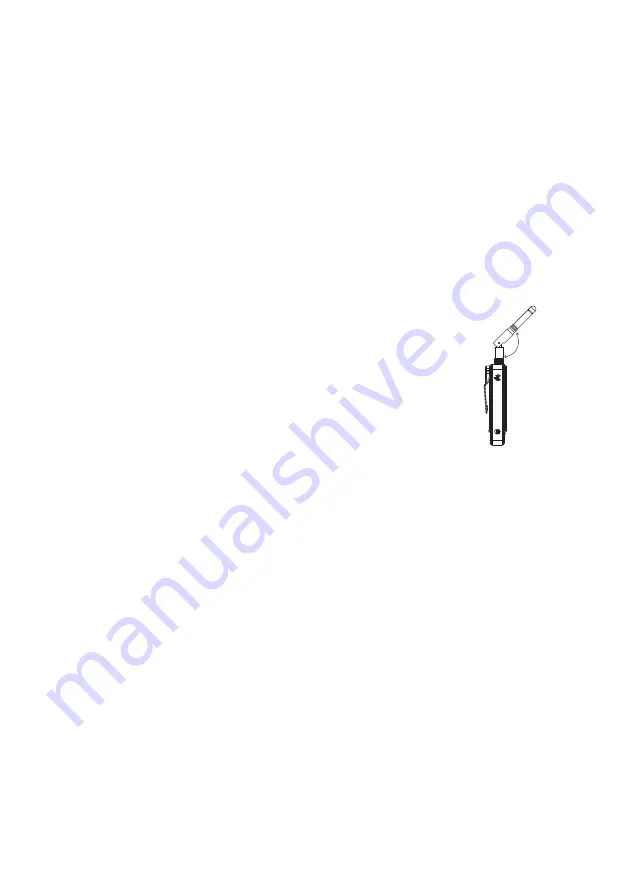
Tips For Best Results
1. For each use of the PRO-XR start with the RX and TX units fully charged.
2. Monitor sound from the receiver with headphones while filming so you can
catch any possible disturbances in the signal before concluding your shoot.
3. Position the TX and RX with as few physical obstacles between them as possible. While the PRO-XR system
can overcome minor obstructions fairly well, a clear line-of-sight between the TX and RX is always best.
4. Use the high-gain antenna on the transmitter whenever possible. When placing the transmitter behind a
person’s back, bend the high-gain antenna away from the person’s body at a 45º angle for better wireless
performance.
5. Over-crowded Wi-Fi environments can make it challenging for the PRO-XR to find a clear channel on which to
connect. An over-crowded Wi-Fi environment will also limit the number of PRO-XR systems that can be used
simultaneously in the same area. Consider these limitations when choosing your location.
6. Close proximity to Wi-Fi or bluetooth equipment can negatively affect performance. Avoid operating the
PRO-XR near such equipment whenever possible. If your camera has a Wi-Fi functionality, you may want to
turn it off.
7.The PRO-XR system will automatically scan the 2.4 GHz environment each time it is powered on and choose
the best frequencies on which to connect. You can use this to your advantage; if you know of a trouble spot
because of its proximity to other 2.4 GHz equipment, turning on the PRO-XR system in a trouble spot will allow
it to better avoid frequencies that are already in use. If you encounter an area that causes frequent drop outs
while using the system, carry both PRO-XR units into the trouble spot, power off the units and then power them
on again. When the units pair up again they will avoid using any interfering frequencies in the area.
8. Do not use the 50 mW and 100 mW output powers at distances of less than 5 feet. Reserve their use for longer
distances, and to overcome physical obstacles to line-of-sight or challenging 2.4 GHz environments.
9. When using the PRO-XR with a DSLR or mirrorless camera, set the volume level of the receiver to its maximum
and then reduce the gain at the camera to get a strong audio signal without overloading. If additional reduction
in gain is still needed, back off the volume on the receiver until levels are optimized. In general, it is best to
engage the preamp on the camera as little as possible.
Reset Button
Both the transmitter and receiver have a recessed reset button located on the back. The reset button acts as a
backup to the power button’s “off” function. In case either unit’s power button is unresponsive, the reset button can
be used to power it off. To use the reset button, the unit must be powered on. Press the reset button by using a
thin, rigid object like a paper clip or tip of a pen; push and hold for 1 second and then release. The unit will power
off and need to be turned on again.
Transmitter Antennas
Flexible Antenna
: Designed to be less obtrusive when wearing the transmitter on a belt, in a pocket, or under
clothing, the flexible antenna will perform well in most situations. This antenna is designed exclusively for use
with the transmitter and
should not be used on the receiver
.
High-Gain Antenna
: The high-gain antenna can significantly improve wireless performance when used on the
transmitter. The only drawback is that it is more obtrusive than the flexible antenna, and may not be suitable for
use depending on the situation. However, we recommend the use of this antenna whenever possible,
especially in challenging environments, ie: areas with a high number of Wi-Fi signals, situations with
line-of-sight obstructions, and operation at long distances.
When placing the transmitter behind a person’s back, for best results use
the high-gain antenna and bend it away from the person’s body at a 45º
angle. (See Fig. 1).
10
45º
Fig. 1
Содержание PRO-XR
Страница 1: ...PRO XR 2 4 GHz WIRELESS MICROPHONE SYSTEM INSTRUCTION MANUAL...
Страница 11: ......






























